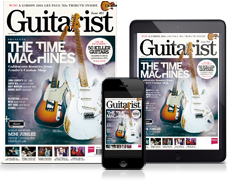Historic hardware: Gibson ES-175D
A close look at a 1965 Charlie Christian blade-pickup ES-175
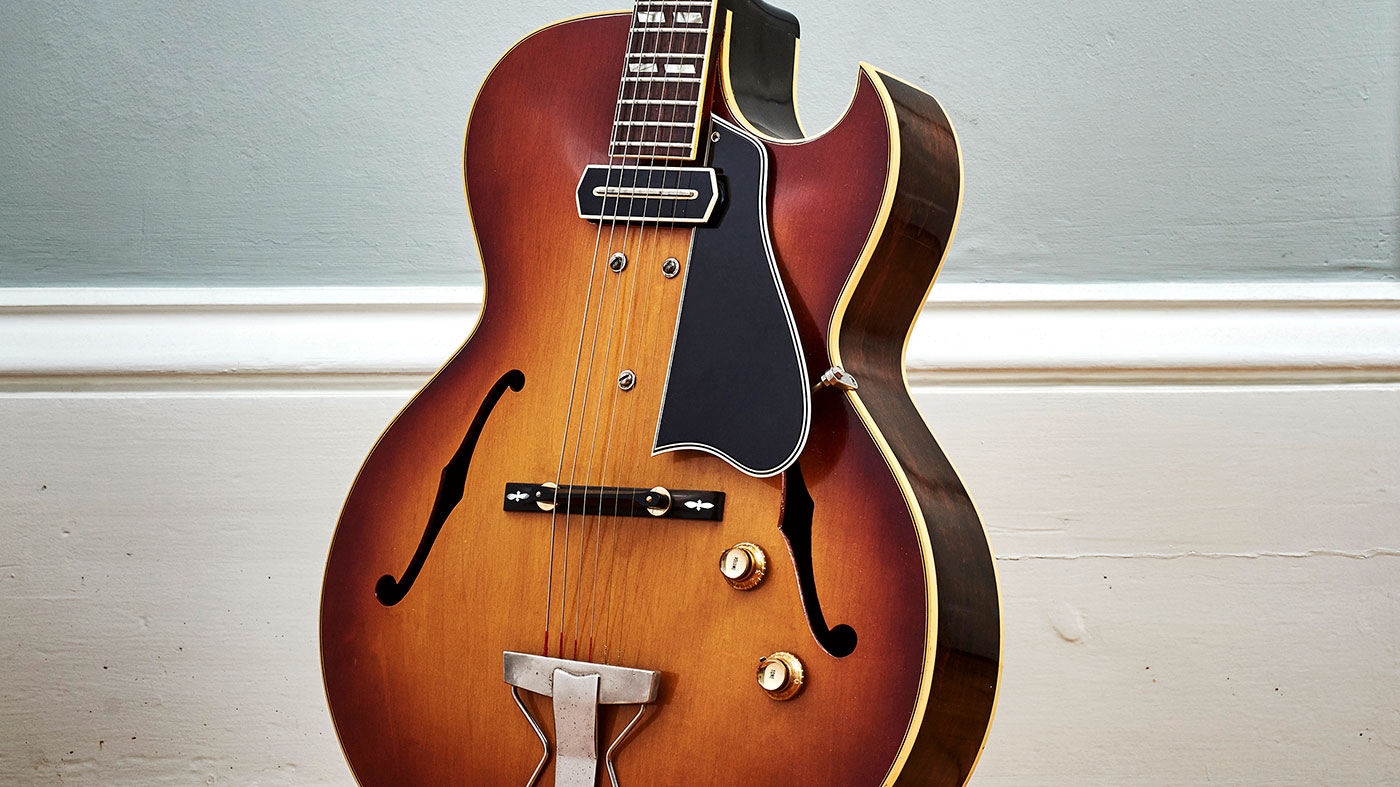
While ogling a pair of ‘golden era’ PAF-loaded ES-175Ds at Vintage ‘n’ Rare Guitars in Bath, we stumbled across an extraordinarily rare find: a 1965 Charlie Christian blade-pickup ES-175…
Nothing beats walking in to a music shop like Vintage ‘n’ Rare in Bath to see for yourself what these incredible guitars look, feel and sound like in real life. Although the internet provides us with a virtually unlimited array of digital images and sounds, browsing through this Aladdin’s cave of vintage rarities is a different experience altogether.
While endeavouring to track down a particular guitar may send you on a never-ending quest to all four corners of the Earth, if an instrument you’ve never imagined before suddenly appears from out of nowhere and demands your unwavering attention, it can almost seem as if it has found you instead. Such was the case with the new owner of this 1965 Gibson ES-175, who prefers to remain anonymous.
The Charlie Christian pickup sounds very clear and detailed, and the notch in the blade underneath the B string helps to balance out the sound
It is fitted, very unusually, with a Charlie Christian pickup. “Customers and music stores very occasionally requested special orders like this from Gibson back in the day,” says the lucky owner, who has been collecting rare Gibson archtops for decades. “Possibly because they saw somebody like Barney Kessel playing a Gibson archtop with a post-war Charlie Christian pickup.
“Music shops were a lot more important in the pre-internet days,” he continues. “Customers would go in and have a chat with the boss, who would get on to the Gibson rep and say, ‘This geezer wants a 175 with one of those old bolted-in pickups. Can you do that?’ And the rep would say, ‘Well, I can get a price…’ I think the price would have been quite high, but back in the 60s [pre-vintage market era] people were less inclined to look for old, used guitars. They were much more interested in buying a new one that played really well, was bright and shiny, and looked good on stage. In those days, people weren’t looking for old guitars like they are now.
“I like the fact that the neck has a nice, gentle ‘C’ profile and has a wide nut width. For most jazz applications that’s quite a good thing. The Charlie Christian pickup in this guitar sounds very clear and detailed, and the notch in the blade underneath the B string helps to balance out the sound. It’s a really great factory recreation of the 30s single notch version.”
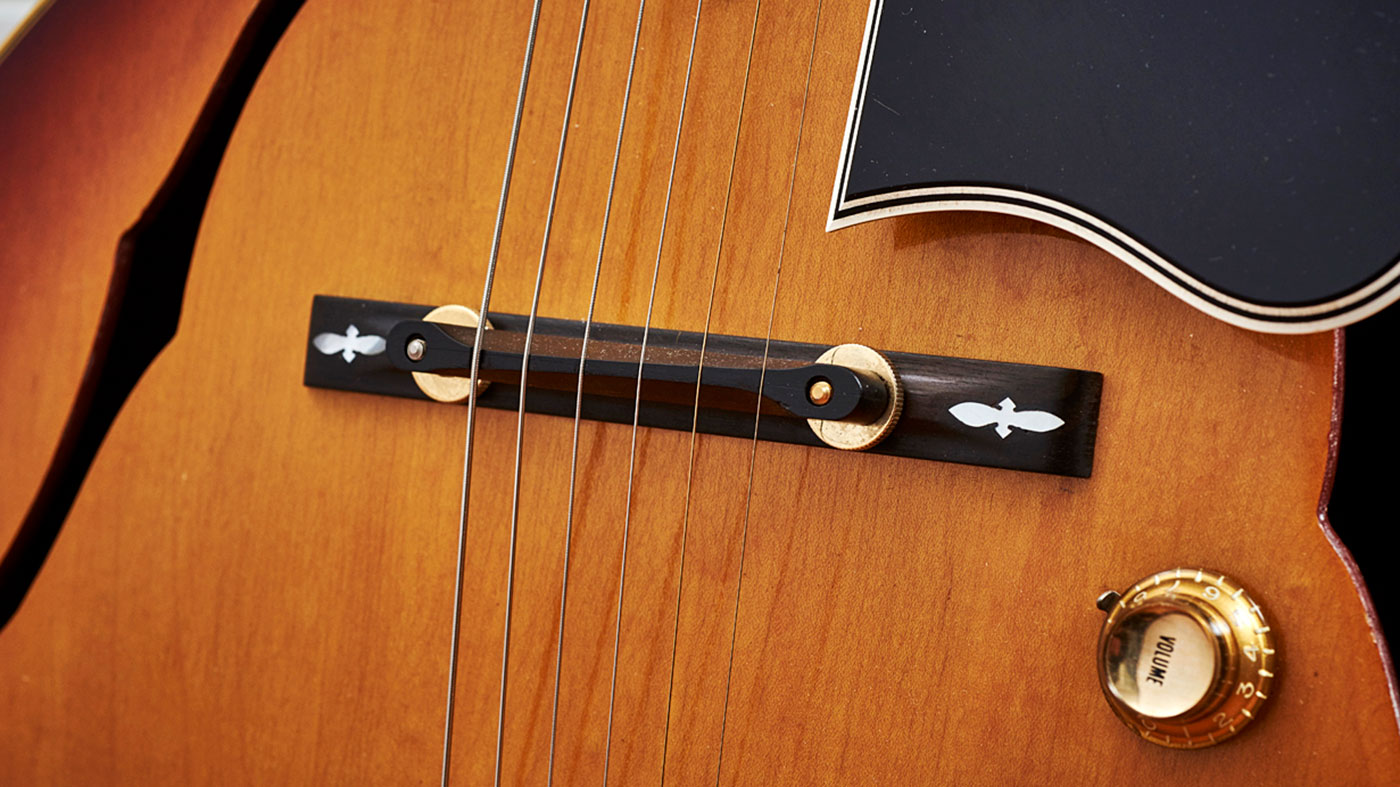
A different beast
We spoke to Paul Tucker of Vintage ‘n’ Rare and asked how this guitar differs from Gibson’s regular production ES-175 models.
Want all the hottest music and gear news, reviews, deals, features and more, direct to your inbox? Sign up here.
“The ES-175 first appeared as a single [front] pickup electric guitar in 1949,” begins Paul, “and that version was discontinued in 1971. The double-pickup type arrived in 1951, although it wasn’t officially labelled as the ES-175D until a couple of years later. Gibson generally used P-90s in ES-175s from 1949 to 1956, with the odd Alnico V pickup appearing very early on, and then PAF humbuckers from 1957. The standard-finish options were Sunburst or Natural, but you do see the occasional custom finish.
Although this ’65 ES-175 is considered to be near unique in its rarity, the regular production 1959 and 1962 ES-175D models below are rare in their own right
“The ’65 ‘Charlie Christian’ ES-175 is obviously a very scarce guitar. Although Gibson were very occasionally putting Charlie Christian pickups into other custom ordered archtops, it was never a regular production thing until the limited run of ES-175CCs was released in 1978. There were a few different versions of the Charlie Christian pickup; the one in this ’65 ES-175 is from the later batch with the notch underneath the B string.”
Although this ’65 ES-175 is considered to be near unique in its rarity, the regular production 1959 and 1962 ES-175D models pictured overleaf are rare in their own right.
“They were a good seller for Gibson at the time, although they didn’t sell massive amounts of the ES-175D by today’s standards,” explains Paul. “Shipping records show they made only 324 in 1959, and 373 in 1962. Both the ’59 and the ’62 play effortlessly; they’ve got 11-gauge roundwounds on at the moment, but could easily take higher gauges, including flatwounds, without losing that feel.
“Some people prefer flatwound strings on ES-175s - jazz players, more often - but round-wound strings are also very popular because so many different types of players use ES-175s. It wasn’t just the jazz cats. Obviously, Steve Howe is well known for using them, and Izzy Stradlin used a white ES-175 in Guns N’ Roses, which goes to show they also make a really good hard rock guitar.
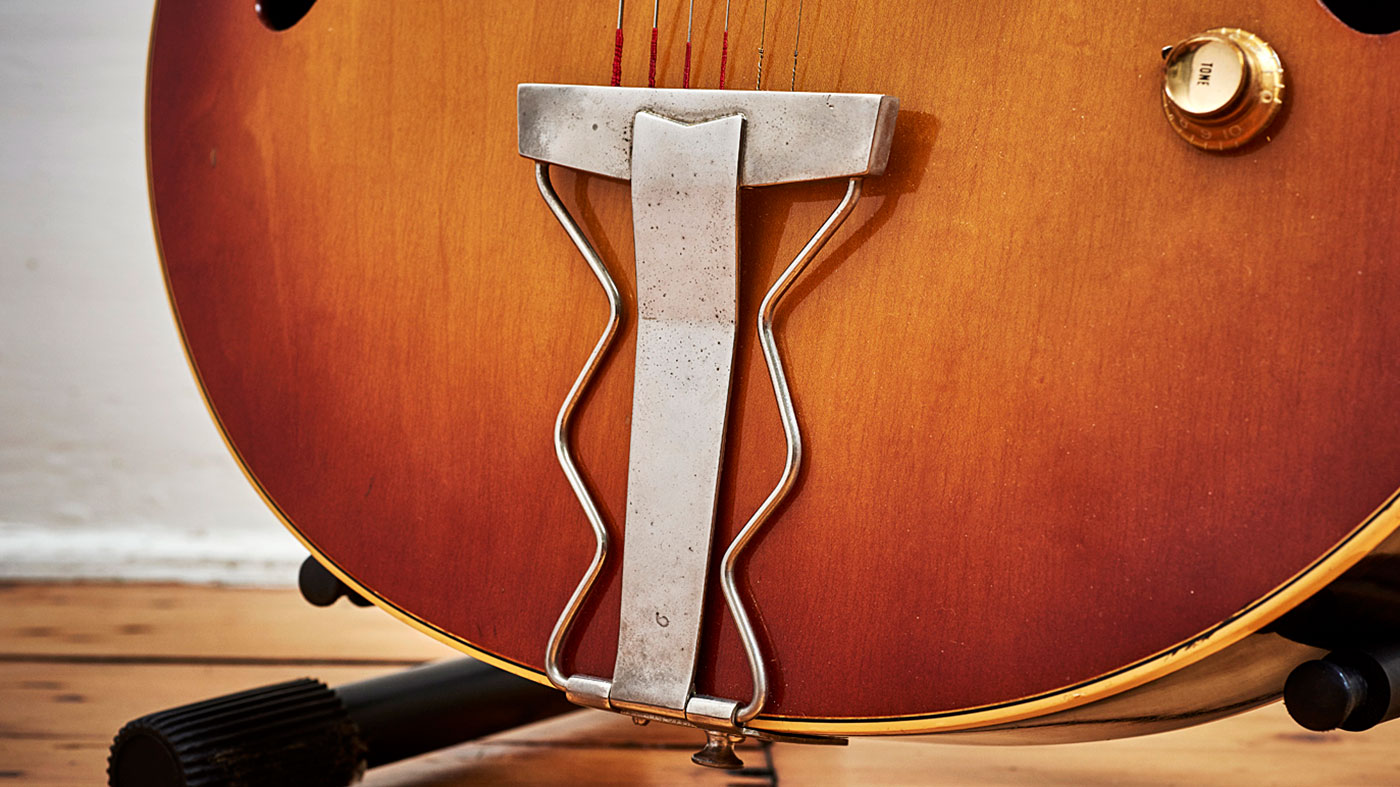
“This ’59 is a very open-sounding guitar. The bridge pickup can sound pretty mean, and the front pickup isn’t muddy at all; it isn’t particularly bass-heavy, and it’s got a lot of presence. Those long magnet PAFs have a very open-sounding character. The notes kind of bloom and they’re very dynamic. There’s not a huge amount of difference between the sound of the long magnet PAFs in the ’59 and the short magnet PAFs in the ’62. It’s very difficult to compare both sets of PAFs independent of the other variables in each guitar, and although the ’62 sounds perhaps a little brighter, you can always adjust the pickup’s height to adjust the tone.
“Of course, it’s possible that the way you perceive the sound could be partly psychological. In other words, the fact that you know it’s a ’59 Gibson with long magnet PAFs might affect the way you approach playing it - I mean, it’s easy to presume that it has to be amazing purely because of what it is! The truth is, you get outstanding instruments - and the opposite - from all years of Gibson production. PAF humbuckers were not consistent, but that’s all part of their charm - their inconsistencies create character.
“Having said that, I really do think there is something very special about the sound of the ’59, but that could very well be down to it having a thicker neck than the ’62. The necks used to be made by hand - as opposed to modern CNC manufacturing - and although there are always variations, general wisdom is that the late-50s guitars had thicker necks than later ones. In 1960, they became very shallow [often referred to as ‘blade’ necks], and by 1962 the profiles thickened up again, but not quite as much as the 50s guitars. The funny thing is that the same kind of thing happened at Fender with Strats and Teles. It’s as if both manufacturers did it in parallel.”
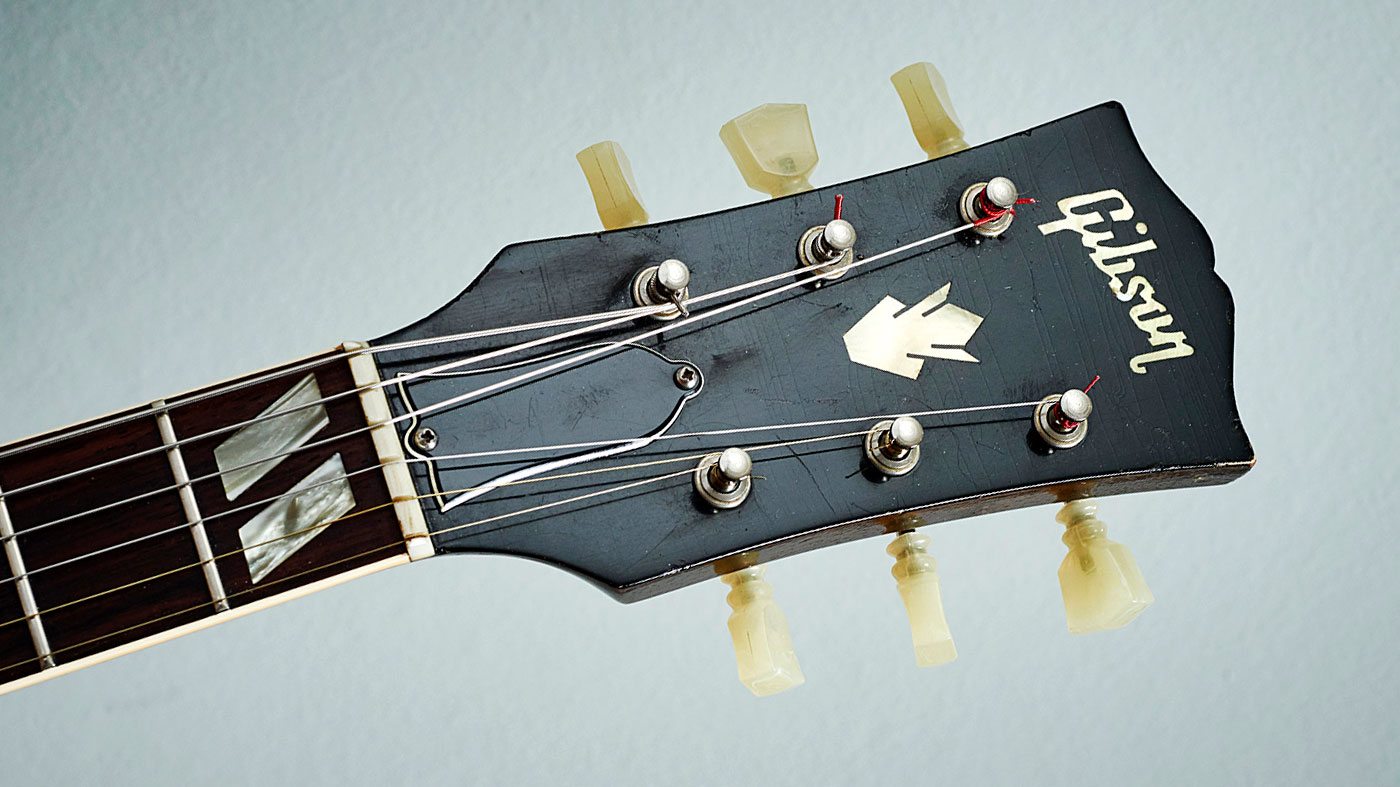
The Jazz Great
Further intrigued by the ES-175’s colourful history and its unusual pairing with a Charlie Christian pickup, we spoke to Adrian Ingram, professional jazz guitarist and author of several books, including The Gibson 175: Its History And Its Players (Centerstream Publishing).
“ES-175s with the Charlie Christian pickup are one of my big interests,” says Adrian, “because I gravitate towards jazz as a player and I always liked the sound of Charlie Christian and René Thomas. There’s an album [Eddy Louiss-Kenny Clarke-René Thomas (RCA, 1974)] where René Thomas is using a Charlie Christian pickup through an old Charlie Christian amp on full - a Gibson EH-150 - and he’s playing these amazing bebop lines, but with an early Clapton ‘Beano’ sound. It’s incredible!
Gibson tried to phase the Charlie Christian pickup out after the war with the simpler P-90, but it remained very popular
“Gibson brought out a limited run of ES-175s with a Charlie Christian pickup in the late 70s [the aforementioned ES-175CC], but the Charlie Christian pickup originally appeared on electric guitars with the ES-150 in 1936. Gibson tried to phase it out after the war with the simpler P-90, but it remained very popular, simply because of Charlie Christian, who was a guitar hero to a lot of players, especially in the early days. They wanted that sound, so there was a bit of resistance in the same way people went back to PAFs - they want the real deal.
“So, Gibson continued to offer the Charlie Christian pickup as an accessory for many years. You could buy them separately, but, more often, people sent their guitar back to Gibson and requested a factory mod. The Charlie Christian-pickup ES-175s were available as a special order, but that stopped at some point, probably due to management shake-ups at Gibson. When Ted McCarty was around, they took pride in doing that kind of thing. They did a lot of off-the-wall stuff back in the day.
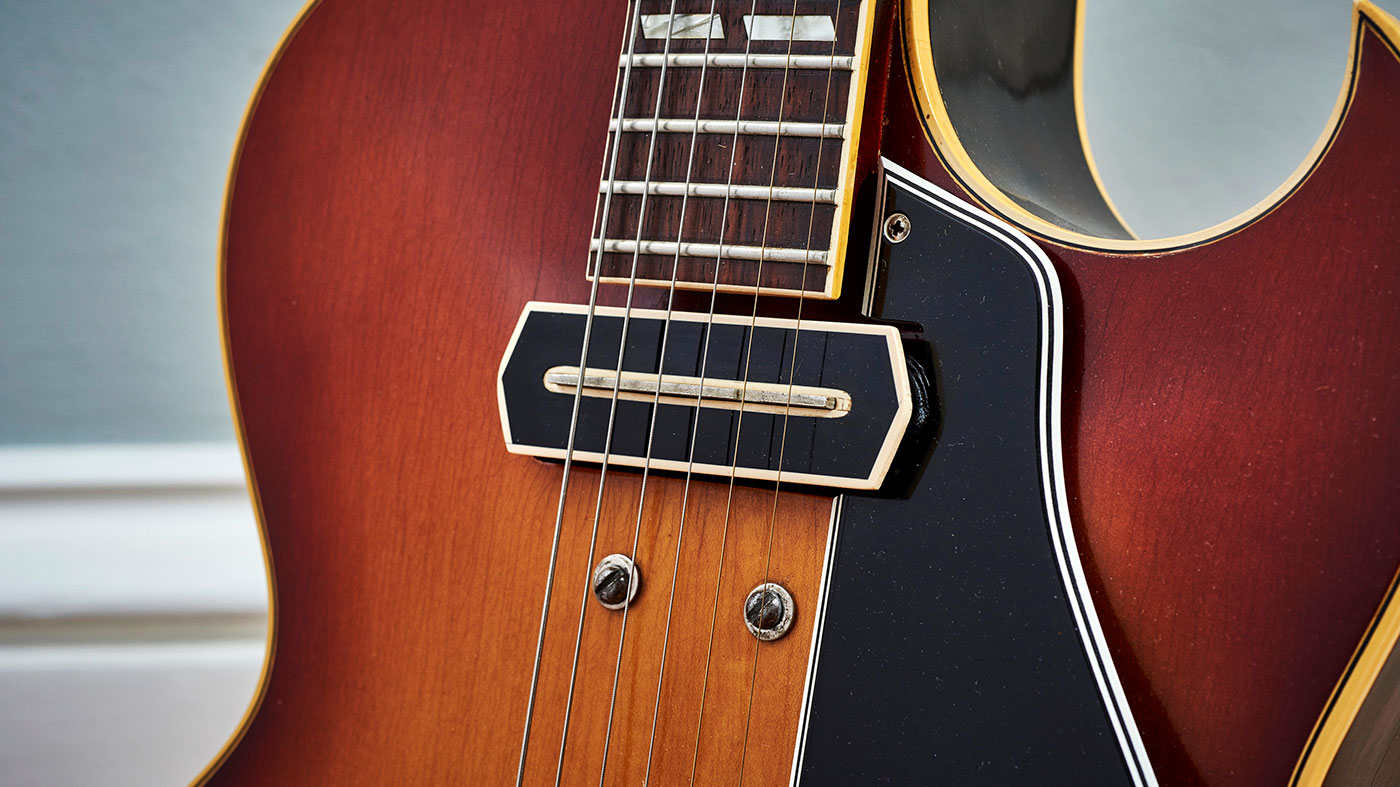
“I spent a lot of time with James ‘Hutch’ Hutchins,” Adrian continues, “who was the last guy alive that had moved from the old Kalamazoo site to the Nashville factory, and he was extremely helpful. He was very into Charlie Christian [pickup guitars] because he’d grown up with it. We went through all the shipping totals and records at the Gibson factory - there was a big filing cabinet full of them, which was a few days’ work! - and they’re all over the place. There are later guitars with earlier numbers, and they’re not as systematic as you might think. Often times, there would just be scribble in the margin. Very rarely the guitar might have had ‘CC’ [denoting a Charlie Christian pickup], but there was no way of telling whether it was a custom-ordered guitar, or whether somebody had sent their guitar back to be modded.
“There were different variations of the Charlie Christian guitar pickup, and a lap steel version that had a slightly wider blade. The very first ones [found on the ES-150] from 1936 had a straight blade, but almost immediately people found that the B string was way too loud, so they decided to put a notch in the blade underneath it, in 1937. It’s only the very first ones that don’t have the notch in them; they also have a thinner blade than the later ones. A couple of years later, Gibson decided to upgrade the pickup even further by using separate notches for each string to minimise overtones. There are also different magnets and windings at different times, but in the 50s Gibson seemed to settle on manufacturing the single notch version with the thicker blade as standard. They had a batch of those and used them whenever they needed to for custom orders, mods or repairs.
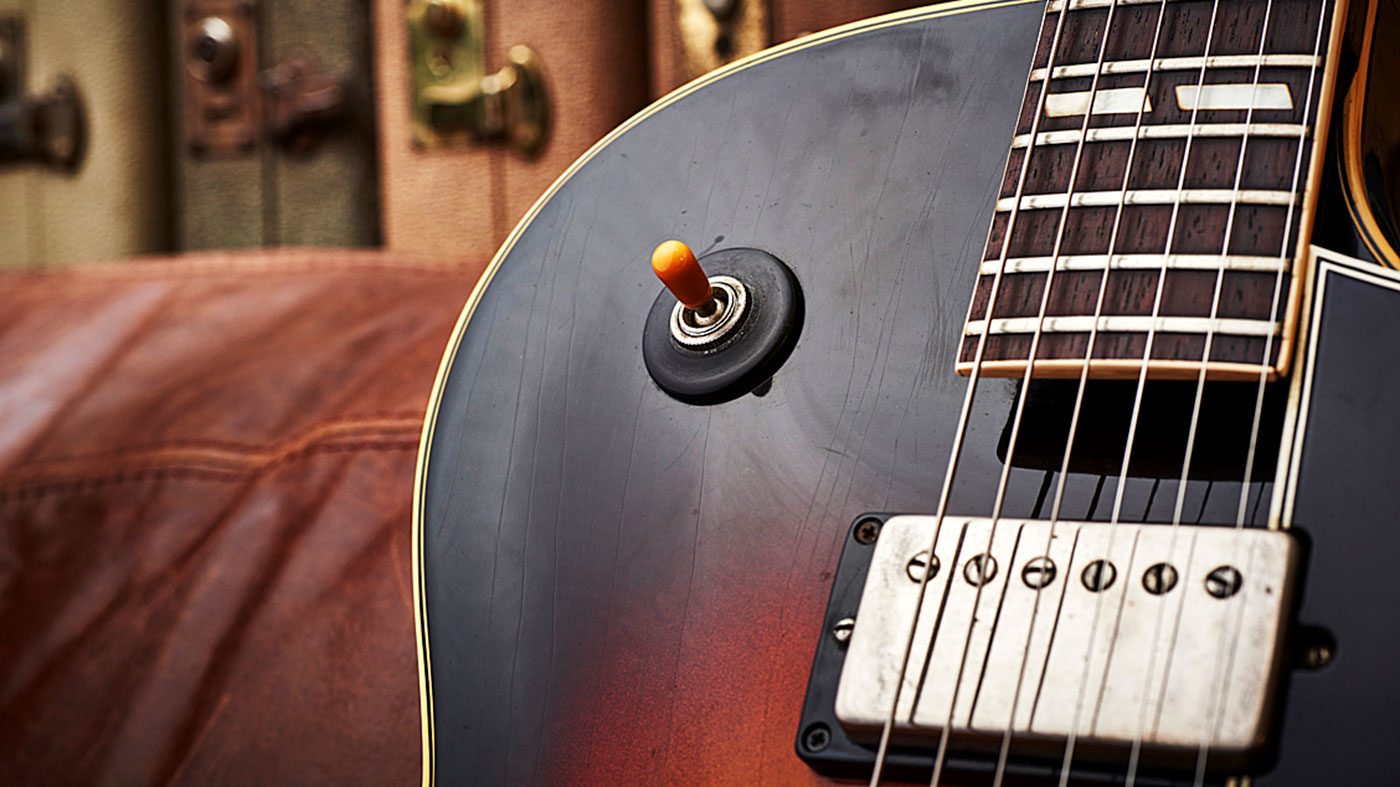
Oddballs
“Wes Montgomery played ES-175s on and off. There’s an album of his called Beginnings and there are various pictures in the artwork of him playing a Sunburst P-90 ES-175. I know he also used one on The Incredible Jazz Guitar Of Wes Montgomery, which he allegedly borrowed from Kenny Burrell. When I went down to Indianapolis to see Wes’s widow and some people that played with him, I checked out Arthur’s Music Store and asked the owner [Amos Arthur] if he had any L-5s for sale from the late 50s or early 60s. He said, ‘I have got a nice 50s Gibson archtop I’ve had since new. I bought two from Gibson at the same time - one for Wes and one for me. Wes went on to do very well, but I never got past three chords! Wes’s was an ES-175 and I ordered an L-4C [the acoustic equivalent of an ES-175] in black with a Charlie Christian pickup.’
Compared to most of the guitars that were around at the time it’s very manageable and comfortable
“He brought this black Charlie Christian L-4[CES] out from the back and it just glowed! I immediately said, ‘How much?!’ but he wouldn’t part with it - and also my wife was worried I might sell the house to pay for it! But it goes to show: Wes owned at least one ES-175 in his time, other than just borrowing them, and it certainly was possible to order these kinds of custom guitars from Gibson. I’ve even seen a three-quarter-sized ES-175, but it didn’t show up anywhere in the Gibson company records. I come across this kind of stuff all the time - guitars I’ve never seen before. It’s hard to generalise, because there are some real oddballs out there!
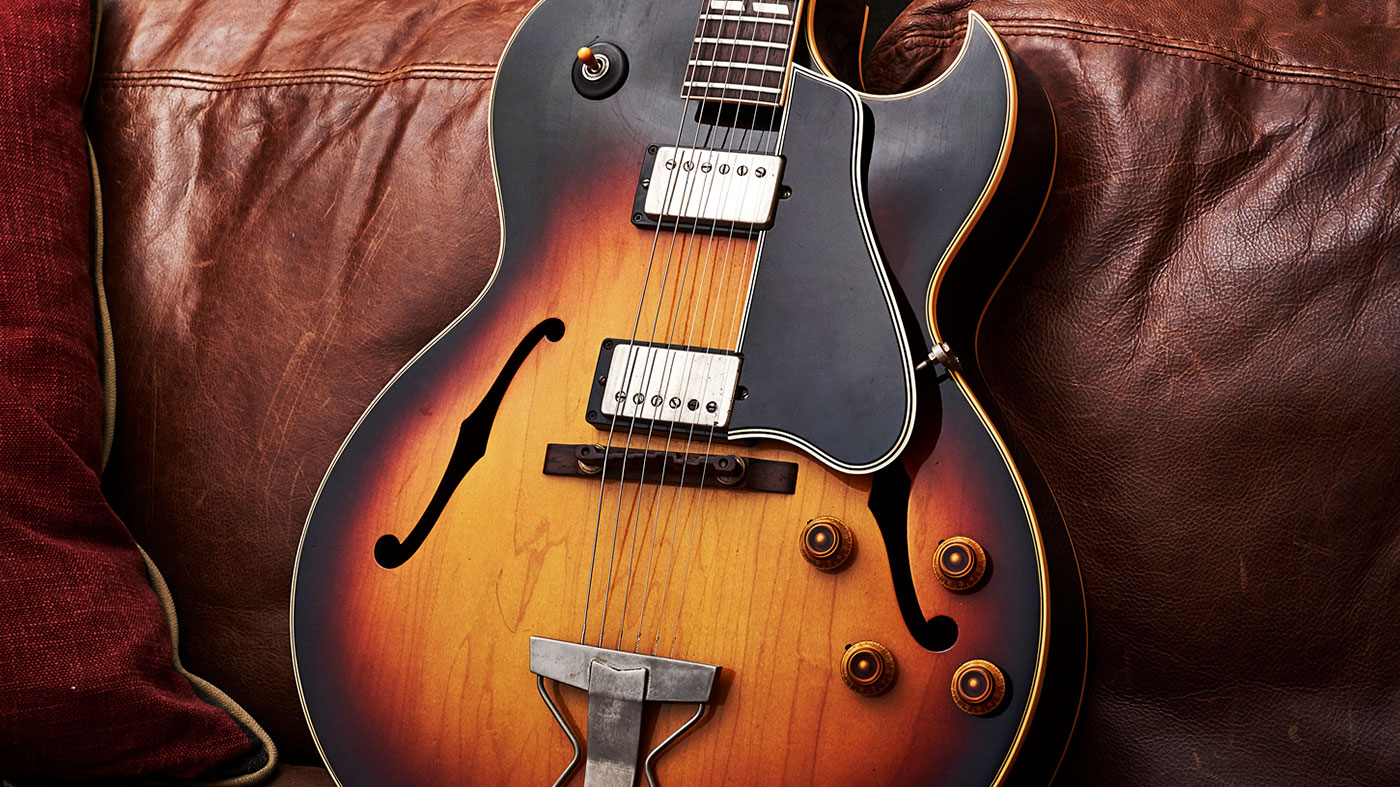
“It’s alleged that the idea for the ES-175’s sharp [Florentine] cutaway was suggested when a young Kenny Burrell took one of his guitars - an early blonde L-5 that had been modified with a Charlie Christian pickup - to Gibson and asked for a deeper cutaway,” Adrian tells us. “It’s anecdotal, but there are some pictures of him playing this guitar with a sharp cutaway. Sharp cutaways look great, especially on a smaller-bodied archtop like the ES-175.
“Jim Hall, Herb Ellis and Joe Pass all told me they liked the ES-175 because of its size. To people who are used to playing Strats and Teles, maybe it seems big, but compared to most of the guitars that were around at the time it’s very manageable and comfortable. Pat Metheny always says, ‘It’s a working man’s guitar.’ It’s a workhorse and it’s still out there. The ES-175 has been used by so many different players. You see people in funk bands playing them, reggae groups, and the occasional country player. They had a certain amount of popularity with blues guitarists, too; BB King played one.
“Changing from P-90s to PAFs in 1957 made it a more versatile guitar, stylistically. The ES-175s were liked by rockabilly and rock ’n’ roll players who, more than likely, still had one foot in the jazz camp because they looked to the older players to learn to play well. Scotty Moore was famous for playing an ES-295, more or less an ES-175, and we know he was heavily influenced by Chet Atkins, Merle Travis, Tal Farlow and Barney Kessel. No doubt he played [Gibson archtops] because of his heroes.
“It’s one of a minority of Gibson guitars that hasn’t been out of production since it came out. There aren’t many Gibson guitars that have had as long a life as the ES-175.”
Guitarist/MusicRadar would like to thank Vintage ‘n’ Rare Guitars in Bath and Adrian Ingram
Rod Brakes is a music journalist with an expertise in guitars. Having spent many years at the coalface as a guitar dealer and tech, Rod's more recent work as a writer covering artists, industry pros and gear includes contributions for leading publications and websites such as Guitarist, Total Guitar, Guitar World, Guitar Player and MusicRadar in addition to specialist music books, blogs and social media. He is also a lifelong musician.

